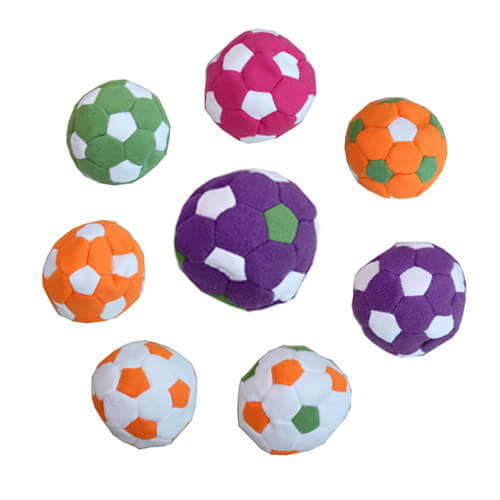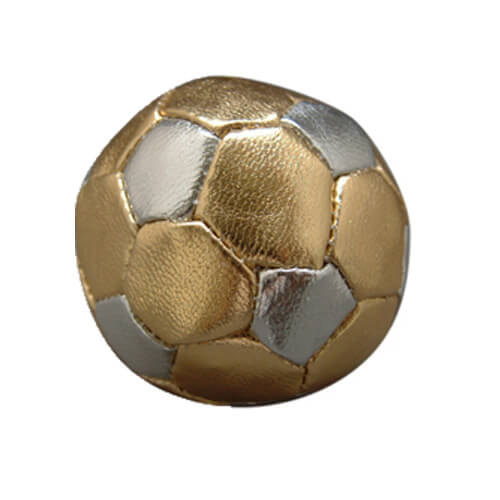 admin
admin
 Mar 15,2018
Mar 15,2018

Don’t be intimidated by local footbag fans and their superb juggling skills, you may just have a wrong footbag. Rest assured, they didn’t play that kind of tight, leather, elastic foot bag.
What is the difference?
Today\'s footbag manufacturers have brought freestyle to their daily routine. Casual kickers produce a variety of soft, use environmentally friendly covering materials and fillers. These soft fabrics can be washed, come in a variety of colors. The most important thing is that it greatly speeds up the learning process. The vast majority of footbags are made of synthetic (man-made) materials and have various names, grades, and colors. Thicker, therefore the most durable synthetic suede grades are super suede and multi-fleece. If the material of the outer shell of a foot bag is classified as “synthetic suede”, it is likely to be a medium grade material, which is a good balance of softness and durability. Flattened Panne fabrics are created for super soft outerwear and are increasingly welcomed by freestylers. Facile, generally considered to be the softest of all cover materials, has an almost “buttery” feel to it and is a common choice of elite-level freestylers. Although most of today’s footbags are made from one of these materials, there are still a few made of pigskin and cowhide, which provide excellent durability and “bounce.” Specialty footbags for net play use a resilient vinyl cover that provides the advantages of cowhide in all weather conditions. Readily available and inexpensive crocheted footbags are made of rayon or cotton and can vary considerably in their size and density.
Another variable in the manufacture of footbags is the panel design. In recent years, with the progress of innovation and manual craftsmanship, multi-panel shoes and bags have become more and more common. In general, multi-panel design can improve roundness. The more panels you use, the more rounded the footbag, resulting in a more realistic and predictable kick. However, these beautiful designs often require increased labor to produce, which in turn increases consumer costs. But when choosing high-quality bags, there is more to consider. For beginners, the softer the footbag, the more control can be achieved with minimal effort. The softer footbag is tolerant, slower, more predictable, make it easier for you to connect a series of kicks.
Comparison of sand and particle filling
At the end of the 1990s, sand-filled footbag became the most popular foot bag on the market. Why? Because the sand-filled footbags make it easier to “stall” or “delay.” Most soccer balls filled with sand are filled with about one-third of sand, it is heavier and “lighter” than the football filled ball. The general rule of thumb is that a footbag filled with sand is more likely to stall and do tricks, and plastic-filled footbags will “get out” the shoe more “factually” with less effort. Most synthetic suede plastic-filled footbags soften over time to create a full-featured footbag for delayed and continuous kicking. Many freestylers will own a sand-filled footbag for skoolin’ their new delay tricks and a nice worn in pellet-filled footbag to use once they’ve honed they’re delay skills. Unfortunately hand-made, sand-filled footbags will have a tendency to lose sand over time. The good news is sand can easily be added in minutes.
Steel fillers allow the “best of both worlds” situation, it not only kicks out true and consistent (like plastic-filled foot bags), but extra weight allows for good stalls (such as sand-filled foot bags).
The world Footbag offers more than 60 different footbags. Even for the most experienced players, choices will make people choose difficult. If you are still not sure which one is right for you, you can browse our product page. We have synthetic suede and leather material, the quality are wonderful. Our foot bag and juggling balls have been selling well in AliExpress. If you need, you can send us an email.

